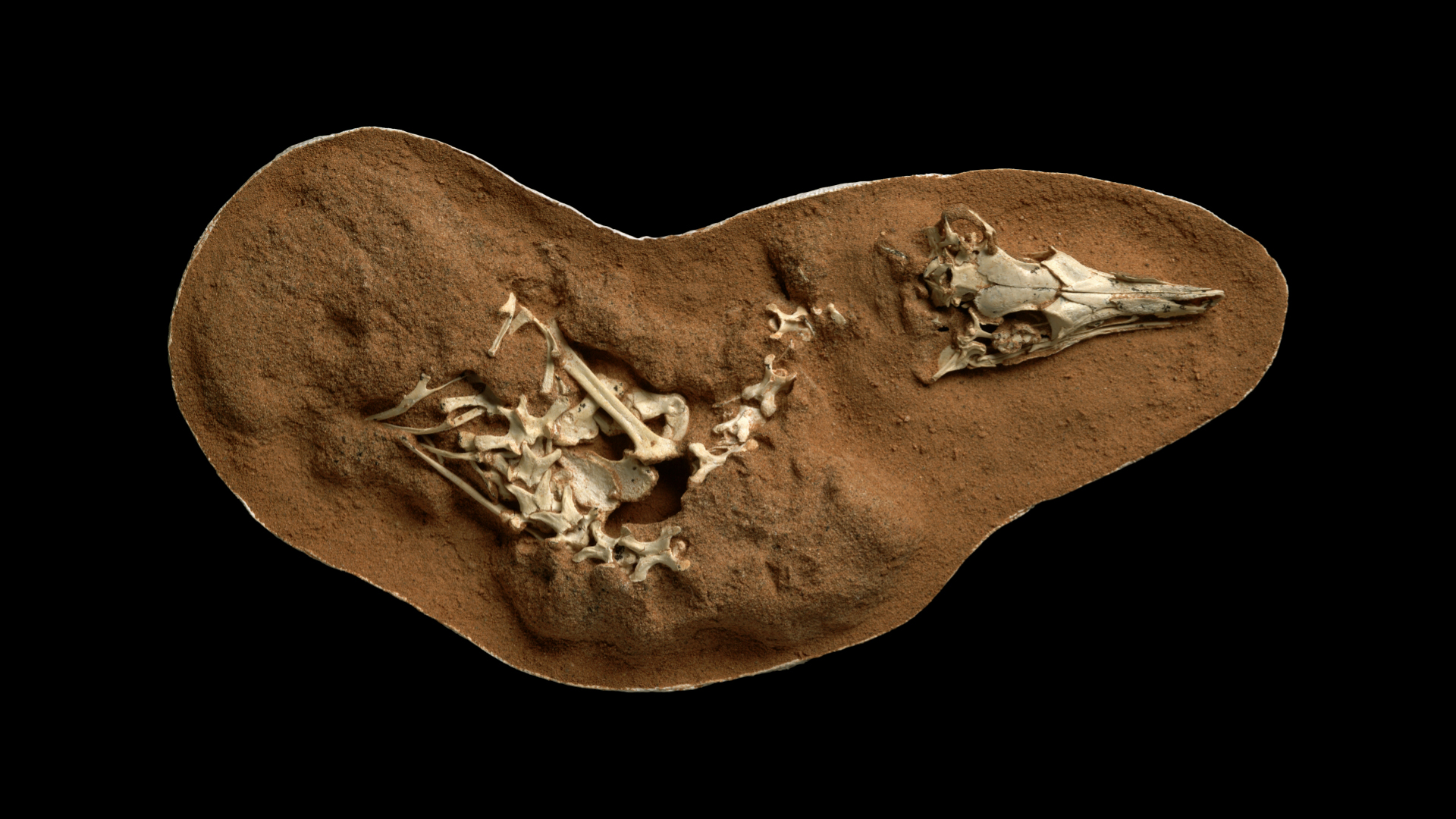An international team of scientists used CT scans and detailed measurements to collect
Shuvuuya is a genus of bird-like theropod dinosaurs whose fossils have been found in the Upper Cretaceous deposits of Mongolia.It is a member of the superfamily Alvarezsauroidea, a small coelurosaur.The type and only species is Shuvuuia deserti.The name comes from the Mongolian shuvuu, bird.
Shuvuuia deserti was a little dinosaurthe size of a chicken and lived in the deserts in the territory of modern Mongolia. The skeleton of Shuvuuia deserti is one of the most bizarre of all dinosaurs. His skull is fragile. However, it possesses muscular forepaws with one claw each and long legs. This strange combination of properties has baffled scientists since its discovery in the 1990s. With the new data, the scientific team hypothesized that, like many desert animals, the Shuvuya foraged at night using hearing and sight to find prey. For example, he ate small mammals and insects.
 Photo of the fossilized skeleton of the Desert Shuvuya. (Image credit: Mick Ellison / AMNH)
Photo of the fossilized skeleton of the Desert Shuvuya. (Image credit: Mick Ellison / AMNH)
A combination of light-sensitive eyes andsuperior hearing suggests that the shuvuya, like owls, was very effective in locating prey and setting ambushes at night. For comparison, the theropod velociraptor, which lived in the Gobi Desert near Shuvuya, could hunt at dusk, but not in the dark, the authors of a new study note.
Read more
Scientists have shown how a black hole tears apart a star
Elon Musk: the first tourists to Mars will die
Scientists have conducted the largest genetic study of super-longevity